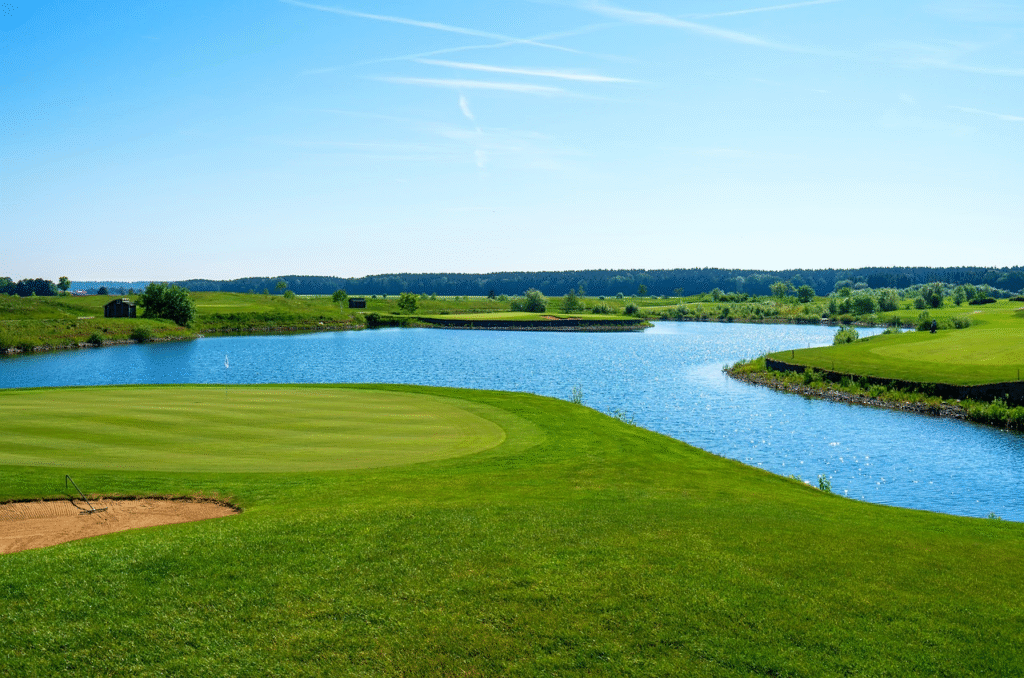
Image by Alicia Rädler from Pixabay
Golf has always been intertwined with nature. Rolling fairways, pristine greens, and carefully placed hazards depend on environmental balance to create both beauty and challenge. Yet in recent years, climate news has reshaped how architects, course managers, and players think about the future of the game. Droughts, floods, and unpredictable weather are no longer rare occurrences—they are pressing issues shaping golf course design on every continent. As global headlines highlight climate change, golf is quietly but steadily adapting to the times.
The Connection Between Climate and Golf
Golf courses are highly sensitive to environmental changes. Unlike other sports that take place on uniform, controlled surfaces, golf thrives on natural landscapes. Soil health, grass type, and water availability all play pivotal roles in determining how playable and sustainable a course can be. Climate news, particularly around drought conditions or rising temperatures, has alerted designers that sustainability is not just an option—it is a necessity. Courses must now be designed with resilience in mind, balancing tradition with ecological responsibility.
Water Management as the Top Priority
Perhaps the most urgent issue shaping course design is water scarcity. Climate news regularly reports record-breaking droughts in areas like California, Australia, and parts of Europe. For golf architects, this reality demands creative solutions. Many modern courses are being designed with drought-resistant grasses, efficient irrigation systems, and even recycled water facilities. Instead of lush green expanses maintained by excessive watering, more courses are incorporating natural landscapes that use native plants requiring minimal care. The result is a more eco-friendly and locally adapted design, ensuring the game can continue without straining community water supplies.
Rising Seas and Coastal Course Challenges
Another recurring theme in climate reporting is the rise of sea levels. Coastal golf courses, some of the most famous in the world, face a unique challenge as erosion and flooding threaten their longevity. Designers are increasingly factoring in protective barriers, elevated fairways, and drainage systems to safeguard courses against extreme weather. At the same time, some architects are taking a bold approach by allowing water to play a larger role in design, creating new strategic hazards while adapting to the unavoidable changes in the environment.
Shifting Playability and Design Strategy
It’s not just the physical landscape that climate change is reshaping—it’s the way golf is played. Warmer temperatures often extend the playing season in some regions but shorten it in others. Wetter conditions may slow down fairways, while drought can harden them, affecting ball roll and strategy. Course designers must think ahead, creating layouts that remain challenging and enjoyable under varied conditions. This often involves flexible tee placements, diverse grass varieties, and innovative green complexes that maintain playability regardless of shifting climates.
Technology and Training in the Face of Change
While course design is evolving, so too is player preparation. Golfers are relying on advanced tools to keep their game sharp even as conditions change. For example, golf training aids are helping players adjust their swings, improve accuracy, and maintain consistency across different weather environments. These tools allow golfers to prepare for challenges they might face on courses designed to withstand environmental pressures, bridging the gap between tradition and innovation.
Equipment Innovation Aligned with Sustainability
Beyond course design, golf equipment manufacturers are also paying close attention to climate news. Many brands are researching eco-friendly production methods, experimenting with recyclable materials, and reducing their carbon footprint. Even something as fundamental as golf balls is undergoing innovation. Manufacturers are exploring sustainable materials while maintaining durability and performance, ensuring the sport can thrive without contributing heavily to environmental damage. Players, in turn, are becoming more conscious about the environmental impact of their choices, creating a ripple effect throughout the industry.
Case Studies: Climate-Conscious Course Design
Around the world, several golf courses serve as models of how climate news is driving real-world design decisions. In the Middle East, courses are embracing desalination plants and artificial turf alternatives to combat extreme heat and lack of water. In Scandinavia, courses incorporate rugged natural terrain with minimal alteration, preserving local ecosystems while providing a unique playing experience. Meanwhile, in the United States, many courses are rewilding parts of their properties, reducing the need for chemical treatments and allowing biodiversity to flourish. These examples highlight how sustainability is no longer a side consideration but central to modern golf architecture.
The Future of Golf in a Changing Climate
Looking ahead, the influence of climate on golf course design will only intensify. Golf is a sport deeply connected to its environment, and its future depends on a proactive response to climate news. More courses will likely be built with multi-functional purposes, serving as green spaces for communities while doubling as resilient playing fields. Sustainability certifications, renewable energy use, and eco-conscious construction will become the norm rather than the exception. For the sport to thrive, designers, players, and industry leaders must work hand in hand with nature rather than against it.
Balancing Tradition with Innovation
The challenge facing golf is striking the right balance between honoring its tradition and embracing necessary innovation. Players still seek the timeless beauty of fairways winding through trees, greens that test their precision, and bunkers that challenge their decision-making. Yet these must now coexist with solar-powered maintenance equipment, water recycling systems, and courses that embrace local ecosystems. This shift does not diminish the game—it enriches it, allowing future generations to experience golf in harmony with the planet.
Conclusion: A Sport Shaped by Headlines
As climate news continues to dominate global discussions, golf stands as a microcosm of how sports must adapt. From design philosophies to player preparation and equipment choices, the ripple effects are undeniable. Golf courses are no longer just about aesthetics and challenge—they are about resilience, responsibility, and sustainability. In adapting to these new realities, the sport demonstrates its enduring ability to evolve without losing its essence. Climate change may pose challenges, but it is also inspiring innovations that will ensure golf remains both timeless and relevant for decades to come.
About the Author
Jordan Fuller is a golf mentor, writer, and expert on golf equipment who shares insights to help players improve and understand the evolving game worldwide.
